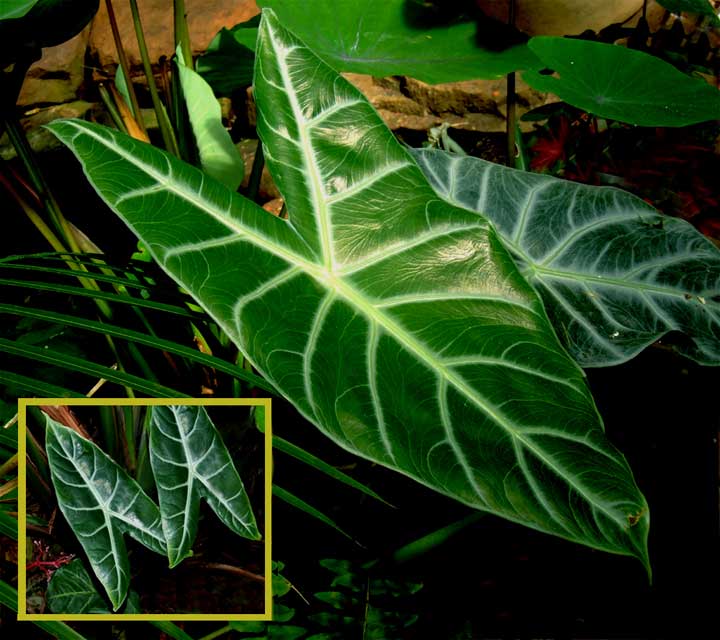![]()
Aroids and other genera in the Collection
Take the Tour Now?
Orchids
The
Exotic Rainforest
Plants in
the Exotic Rainforest Collection
Images on this website are copyright protected. Contact us before attempting to reuse.
New:
Understanding, pronouncing and using
Botanical terminology, a Glossary
Alocasia longiloba
Miq.
Synonym: Alocasia lowii
Hook
Warning: Florida Hill Nursery of
Debary, FL,is currently using
the photo below without permission on their website and on eBay
in
violation
of my legal
copyright stated above and embedded beneath the photo. Just run
your cursor over the photo.
We recommend you do not purchase from anyone that takes photos illegally.

Synonym: Alocasia lowii Hook
Until recently this specimen was considered a separate species. Botanist Alistair Hay's recent revision has now included A. lowii into Alocasia longiloba. Alocasia longiloba is a species plant collectors just can't seem to decide what the correct name should be, but Alistair's revision should now settle the confusion. Until Hay's revision, some collectors had already decided to considered the species to be Alocasia longiloba, but as with many species there continues to be a great deal of confusion. Alocasis logniloba is easy to grow but has relatively fragile leaves. The leaves, which are burgundy on the underside, tear easily even under the pressure of a garden hose. Too much sun will also cause them to loose much of their color and become a faded green.
The plant is said to have originated in SE Asia in tropical Malaysia and Indonesia but botanist Dr. Tom Croat has collected the species in Australia. Alocasia species are known to be highly variable and not every leaf of every specimen will always appear the same. This link explains in greater detail the scientific principle of natural variation and morphogenesis. Click here.
Our experience has shown Alocasia longiloba prefers plenty of water provided you grow it it fast draining soil. Most plants available today are tissue cultured "clones" and in some cases may be hybrid combinations of several species. This Alocasia can take on a variety of shapes as it grows in size up to 20 inches (50cm).
Regardless, it is a beautiful Alocasia in a tropical garden or atrium.
Aroid Pollination!
As
it occurs in nature and by any horticulturist
Join the
International Aroid Society:
http://www.exoticrainforest.com/Join%20IAS.html